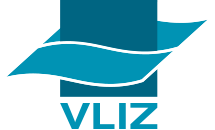Comprehensive water management: analysis and proposals to access safe water and reduce hydric vulnerability in a sector of the Lurigancho, Chosica district, Peru
DOI:
https://doi.org/10.31381/paideiaxxi.v14i1.6443Keywords:
Water Management, Safe Water, Risk Mitigation, Debris Flow, Urban UpgradingAbstract
The aim of the study was to analyze the possibility of proposing improvements to water management from a local government, increasing access to safe water for domestic consumption and reducing vulnerability to water threats, represented by debris flows. For this purpose, the study area was the Carosio sector, an informal settlement located in the district of Lurigancho, belonging to the metropolitan area of Lima, Peru. A mixed investigation was carried out, using a literature review of 43 documents, quantitative - descriptive techniques to characterize the sector under study through a survey applied to a stratified, random and systematic sample of 76 families (confidence level of 90 %, error of 5.15%), and qualitative methods of consulting opinions through workshops with neighborhood leaders, public officials and consultations with experts. It was established that ensuring water quality requires measures adopted by local authorities to provide a new distribution system, accompanied by simple home-based purification and storage techniques. It also highlights the relevance of modifying the knowledge, attitudes and practices of the inhabitants to reinforce hygienic practices that reduce the prevalence of intestinal parasitic diseases. For its part, reducing vulnerability involves the design of debris flow retention works, storm drainage, and population resettlement in certain areas. The adoption of these measures requires a more resilient urban design and the relocation of some families to safer and healthier homes. It is shown that the possibility of establishing comprehensive water management from the municipality depends on a close link between the community and local authorities, and effective coordination between national and regional entities to build works, facilitate resettlement actions and update the urban planning instruments, which can be promoted through technical assistance programs.












